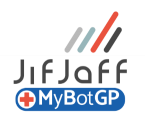We’ve all heard it on the news, at dinner parties, in the pub (when we weren’t locked down): Robots are the future. It’s true! The fourth industrial revolution is upon us and software automation/AI is here to stay. They are used to support businesses in every team & department. They are fast, cheap, trustworthy and scalable.
Robotic process automation is in a growth stage, and the technology is still “emerging”. Innovation is happening at pace, and companies are looking for new ways to describe what their automation type tools can do.
In the world of business automation you’ll encounter many new terms: Robots, RPA, AI, AI Process & Task Mining, Digital worker/workforce, OCR… what do these terms mean? Frustratingly, it is often the case that some acronyms mean the same thing.
Below is a guide to some of the regularly used acronyms – Robotic process automation & Artificial Intelligence dictionary!
Robotic Process Automation is also known as RPA or software Automation.
Software (robot) that can use a keyboard and mouse as we do. It can log in and out of pretty much anything we can with our keyboard & mouse. It can be quickly programmed to follow the rules so it can “mimic” our work. It can replace or support teams of people in every part of our business; there is no limit to the “type” of work it can mimic as long as there are rules to follow. It cannot think or make decisions it hasn’t been programmed to do.
Intelligent Automation (also known as IA).
Software (robots mixed with AI) that can use a keyboard and mouse as we do. It can log in and out of pretty much anything we can with our keyboard & mouse. It can be quickly programmed to follow the rules so it can “mimic” our work. Unlike RPA, IA has a form of intelligence (artificial intelligence) to make decisions by itself. It can replace or support teams of people in every part of our business; there is no limit to the “type” of work it can mimic and some specific areas the AI piece can make decisions.
Digital Worker & Digital Workforce
The digital worker is a generic term for software robots. The word “worker” is used as the robots work in our business in the same way people do: Digital Workforce is a way to describe a workforce that combines people, Automation and AI.
Hyper Automation
A general term to summarise a combination of RPA, AI, Artificial Intelligence, Machine learning, and Process and Task Mining can be used to support or teams of people to work.
RPA COE Centre of Excellence Nine Pillars of Automation
A centralised team (which can be small or big) that takes responsibility for the integration, management and support of RPA, AI, IA. An RPA COE will significantly improve an organisation’s ability to achieve its automation goals, ensuring the full value of the RPA solution. A COE enables companies to assess better and manage the necessary knowledge and capabilities needed to effectively deploy an RPA solution and provide guidelines to overcome any challenges surrounding the RPA journey.
A competent RPA COE team is the long-term strategic approach to ensure RPA is embedded in the organisation and Automation ingrained into the organisation’s culture.
An RPA COE enables an organisation to scale RPA at the enterprise level through standard technology, best practise processes and procedures, and a governance model. It provides a scalable foundation to allow an organisation to redistribute process automation knowledge.
Task Mining
Task Mining works at a desktop level to discover and analyse tasks that users process. Essentially the things they solely have a responsibility to do. For example, an invoice, order, contract, or logistical process may pass through three teams. The software installed records what they do and for how long. This data is also useful for reviewing why some groups or members are faster or slower, and it understands the causes of bottlenecks or finds gaps in longer processes. The software can also (when you use a good one) understand text and model out projections to see what the process will look like when tweaked.
Process Mining
Process Mining is a tool that lets you view multiple RPA processes or workflows at speed at an enterprise level. See it as almost stepping out of business and running software that will map everything going on across individual departments or the whole company. The mining tools work with event logs of crucial enterprise systems to highlight the steps undertaken to complete a specific process. In summary, process mining is a powerful tool to look at everything quickly, take that data and decide what should or should not be automated. It is a way to see how everything is connected and working together. Use that data to model your enterprise requirements for RPA (i.e. reduce operating cost, increase resilience, standardisation, and scalability).
OCR Optical Character Recognition
Put in simple terms, the ability for software to read. Depending on the OCR tool’s capability and quality of what you’re asking it to read (some things can’t even be read by a person)! This software has come along way, and when linked to RPA or IA, you have a solution that can read, interpret, and make decisions and workflow.
We hope you found this outline useful. If you need further support in capability or acronym demystification, get in touch!

